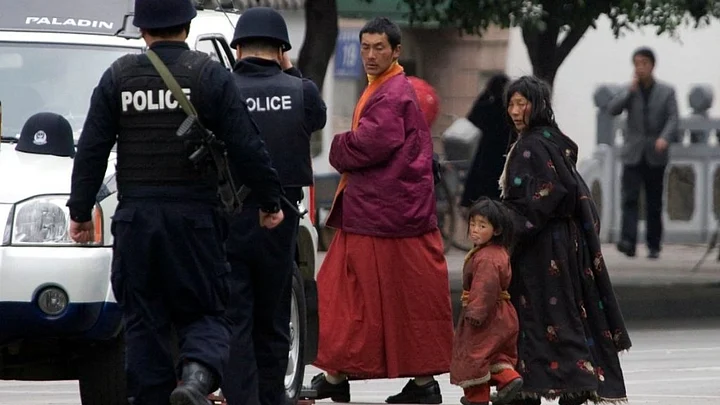Tibet, an innately peaceful country, has seen more than its fair share of violence. When the 14th Dalai Lama fled Chinese oppression and arrived in India, Tibet was crumbling. A direct assault on their culture and traditions and a threat to their life and property, left Tibetans overwhelmingly insecure. Since then, many have immigrated to other countries, but a number of them remain in Tibet.
While China refuses to recognise Tibet as an independent entity, Tibet continues protesting against Chinese control.
Let us experience the ordeal, through glimpses.
With violent and non-violent protests and domestic resistance, Tibet has struggled to retain its identity and cultural independence. Rebellion is practised everyday, even through seemingly small acts such as keeping pictures of the Dalai Lama carefully concealed in homes and workplaces.
When the Chinese administration opened the first train going to Lhasa in 2006, it faced a lot of criticism. According to media reports, exiled Tibetans and right groups said that it facilitated an influx of long-term migrants who could threaten Tibetans' cultural integrity.
An extension of this railway was opened in 2014.
2008 saw a series of violent protests in Tibet. These started in Lhasa, but subsquently spread to other Tibetan regions. According to estimates, 18 civilians were killed and 382 injured.
This unrest began as an annual observance of Tibetan Uprising Day but subsequently transitioned into riots and killings. While the Chinese administration blamed the Dalai Lama for the events, the Dalai Lama said that the unrest was caused because Tibetans were extremely discontent.
On 4 May and 1 July 2008 the Government of the People's Republic of China and the Dalai Lama held talks on the riots.
Tibet has seen various degrees of violence. Over 152 Tibetans have self-immolated in protest inside Tibet since 2009.
Tibetans today continue to live under Chinese occupation. Their resistance to Chinese influence on their culture and traditions remains, because faith is primary for Tibetans and they hold their history and values close to their hearts.
According to an NGO called Free Tibet, Tibetans also believe that along with threatening their language, culture and history, "China's government is plundering Tibet's natural resources and destroying its environment."
(At The Quint, we question everything. Play an active role in shaping our journalism by becoming a member today.)
